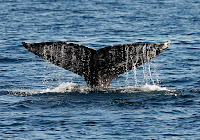 |
| This beautiful eagle was flying high in the sky over Fort Atkinson today... |
There is more to the dropping of those beautiful leaves in the fall than just a crunchy pile of fun to jump into. The yearly ritual of a trees winter dormancy allows us to see all of the activity that has been going on all spring and summer long within their branches.
From the building of nests in the spring to the egg laying and hatching during the summer, these trees are home to many a living creature.
Here are a few nests that I found on a recent walk through my yard. These nests and their occupants were hidden so well by summers greenery that no one knew they were here.
Through all of the family Sing Alongs, the lawn tractor under the branches, people in the swimming pool or on the trampoline or on the swing set or during all of my quiet coffee drinking mornings...I never knew that all of this building and laying and hatching and feeding was going on all around us.
 |
| squirrel nest |
A great place to get a front row seat to the laying, hatching and nurturing of a nesting pair of eagles is right here: www.ustream.tv/decoraheagles
Here is a really cool "colony" of nests that I spotted not far from my house while taking a drive on a recent Sunday morning.
We think they may belong to Egrets or Herons. Egrets are colonial nesters, building stick nests high in trees that are isolated from predators like raccoons. Herons gather in colonies or “heronries” to build stick nests high off the ground. Most Herons and Egrets migrate to some extent. They usually go southward.
They leave mid-September to late October and then return to their breeding grounds by February or March.
The nests are quite a site from the road. A ride along Hwy. 26 between Fort Atkinson and Milton will get you a good view. I can't wait to go back to these nests in the spring and see what has taken up residency in them.
 |
| Colonies of nests |
 |
| Egret |
 |
| Blue Heron |
What about Wisconsin's winter birds?
Black-capped chickadees have a wickedly wonderful assortment of adaptations for the winter. Carefully hidden food items, dense winter coats, selected winter roosting cavities and the ability to go into nightly hypothermia all increase the Chickadees chances of survival.
The chickadee’s ability to go into hypothermia enables it to actually lower its body temperature, in a controlled manner, similar to a bear who hibernates or fish who overwinters at the lakes bottom. This allows the bird or animal to conserve its energy.
Some species grow additional feathers as the temperatures drop, which thickens their insulation. Some birds use the practice of feather fluffing, where they puff out their down feathers to create air pockets, which gives a bird better insulation and traps body heat.
Song birds such as cardinals, blue jays and finches retreat to dense vegetation or into evergreens that stay full all winter. This is a good ecological reason for you to include evergreens in your bird-friendly backyard.
All I know is whatever keeps these birds in Wisconsin through the stinging months of winter is a blessing to us all. Their presence in a place where most living things have retired to burrows or heated homes to wait for warmer days, is a reminder of the gifts that our mother Earth provides for us everyday.

















































